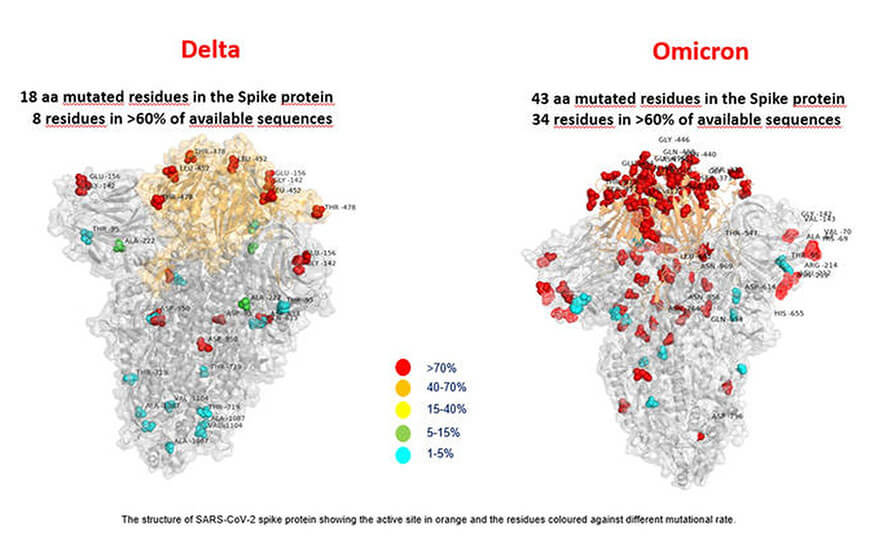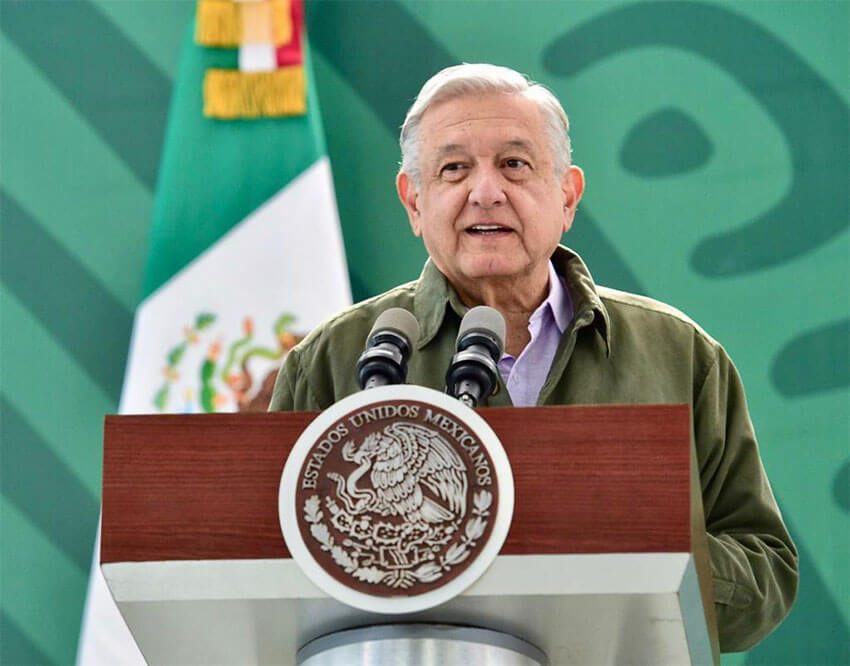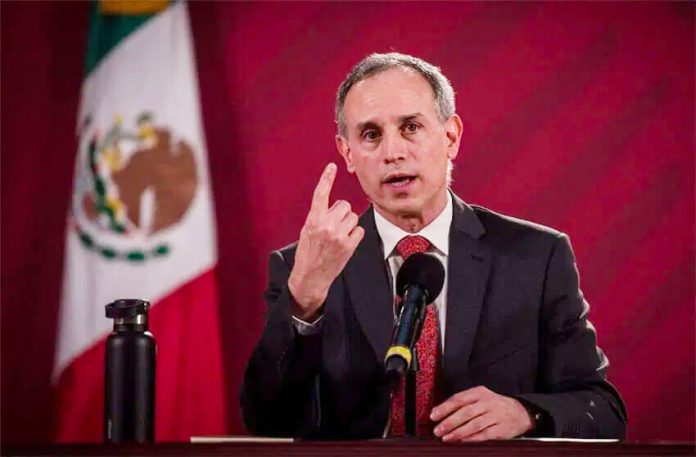While countries around the world impose new travel restrictions in light of the emergence of the omicron variant of the coronavirus, Mexico is not currently planning to introduce any additional measures to stop the arrival and spread of the highly mutated strain.
President López Obrador, who downplayed the threat of the coronavirus at the beginning of the pandemic, said Monday that there was no cause for concern about the variant, first reported to the World Health Organization (WHO) from South Africa last Wednesday.
There is scant information about the new strain – which has not been detected in Mexico – and what there is is not yet confirmed, he told reporters at his regular news conference.
López Obrador said his government is not planning to impose new restrictions, suggesting they are not required because most Mexican adults are vaccinated.
“We’ve made a lot of progress with vaccination, we’re still vaccinating and we’re going to ramp it up,” he said.
“We’ll report about this variant tomorrow but I’ll say to all Mexicans that we’re monitoring [information about the strain] and there is no evidence for us to worry about.”
Deputy Health Minister Hugo López-Gatell, Mexico’s coronavirus czar, said Saturday that some data suggests that the omicron strain is more transmissible than previous variants but stressed that “it hasn’t been proven that it’s more virulent or that it evades the immune response induced by vaccines.”
“Travel restrictions or border closures are not very useful measures,” he wrote in a follow-up Twitter post.
“They affect the economy and people’s well-being. The information disseminated about the risks of the new variant is disproportionate with respect to what existing scientific evidence shows,” López-Gatell wrote.
Unlike many other countries, Mexico has never barred international flights from entering the country and has not imposed any restrictions on incoming travelers. The absence of restrictions has been blamed for fueling coronavirus outbreaks in tourism hotspots such as Quintana Roo and Baja California Sur.
To mitigate the risk of the omicron variant taking hold, health experts consulted by the newspaper El Universal advocated a range of measures, including the testing of incoming travelers and limiting entry to fully vaccinated people.

Alejandro Macías, an infectious disease doctor and member of the National Autonomous University’s coronavirus commission, said that conveying the message that the pandemic is not over is also important.
“We must [continue] to promote the use of face masks, avoid crowds of people, work from home if you can, ventilate enclosed spaces and most importantly get vaccinated,” he said.
Xavier Tello, a health policy analyst who recently predicted that a fourth wave of the pandemic would begin in late 2021 or early 2022, and Andreu Comas, a virologist and researcher at the Autonomous University of San Luis Potosí, agreed that the federal government should immediately offer booster shots to health workers and the elderly. In addition, they urged the government to accelerate the rollout of vaccines to minors.
The government announced two weeks ago that it would offer shots to youths aged 15 to 17, while López Obrador said last week that health authorities will consider the possibility of making third, booster shots available to some sectors of the population, including seniors. But the government hasn’t announced any plans to vaccinate children younger than 15, which Tello thinks is a mistake.
“We have to begin vaccinating adolescents and even young children, like they’re doing in the United States and Europe,” he said.
With regard to its messaging about the pandemic, Tello charged that the government is guilty of “terribly irresponsible behavior,” asserting that it has sought to “create an environment that doesn’t exist” via its coronavirus stoplight map, on which 27 of 32 states are currently painted low risk green.

“Having a country painted green is telling people to gather, to have parties, to go to the zócalo,” he said, apparently referring in the last instance to the rally López Obrador will hold in Mexico City’s central square on Wednesday to celebrate the third anniversary of his government.
Both Tello and Comas predicted that case numbers and hospitalizations will increase with the inevitable arrival of the omicron variant, although the latter said that the impact probably won’t be as severe as that seen last winter, when the second wave of the pandemic peaked and the vast majority of Mexicans hadn’t yet been vaccinated.
The three experts who spoke with El Universal agreed that information about omicron is limited but expressed concern that it could replace delta – which fueled a large third wave in Mexico – as the most dominant strain. They also said that the effectiveness of existing COVID-19 vaccines against the new variant is unknown.
“… This variant seems to be dangerous not because of the number of mutations it has, but rather because it’s capable of replacing the delta variant,” Macías said.
“Until now no variant had been capable of that; the implication … is that [the coronavirus] could once again enter countries that were already punished by the delta variant, like Mexico,” he said.
The WHO said Sunday that the omicron variant presents a “very high” global risk due to the possibility that it spreads more easily than other strains and might be resistant to vaccines and natural immunity.

Meanwhile, Mexico is starting the new working week with all but five states painted green on the stoplight map. The northern states of Baja California, Baja California Sur, Sonora, Chihuahua and Coahuila are all medium risk yellow on the new map, which was published by the Health Ministry last Friday and will remain in effect through December 12.
The risk level was downgraded from high risk orange in Baja California and increased from green in the other four states.
Baja California ranks first among the 32 states for active cases on a per capita basis with almost 90 per 100,000 people, according to Health Ministry data published Sunday. Sonora, Baja California Sur, Coahuila and Chihuahua rank second to fifth, respectively.
Estimated active cases across Mexico total just over 22,000, including more than 3,000 in each of Baja California and Mexico City. The national accumulated tally currently stands at 3.88 million, while the official COVID-19 death toll is 293,897.
More than 76.6 million Mexicans – about 60% of the total population – are vaccinated and about 85% of that number are fully vaccinated, the most recent data shows.
With reports from Milenio and El Universal
